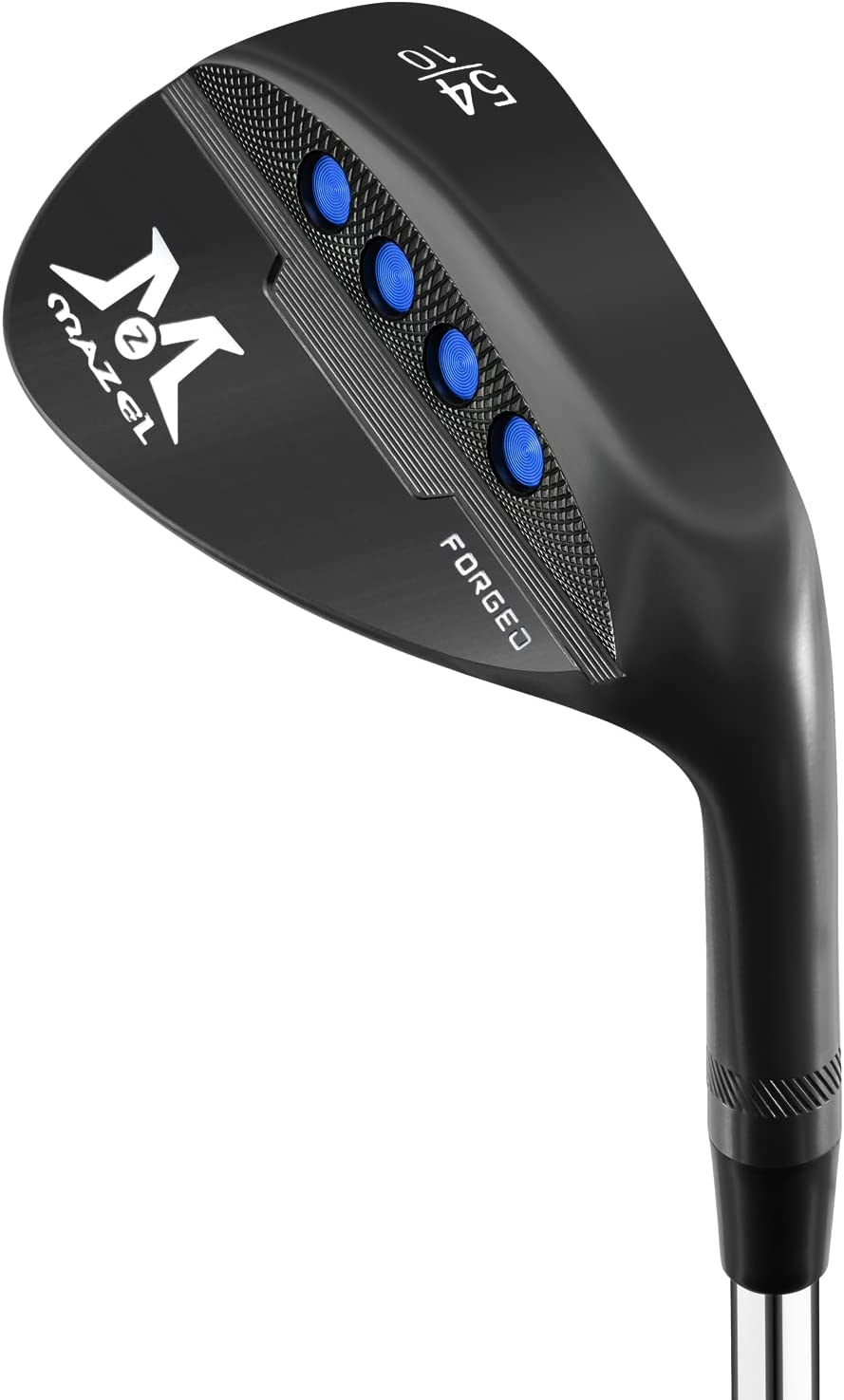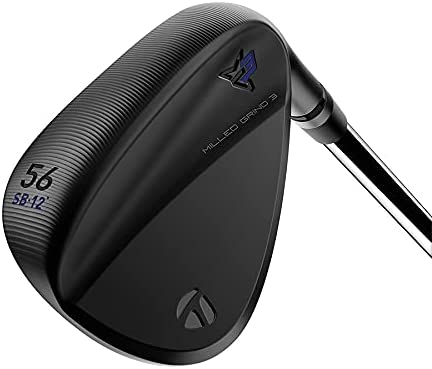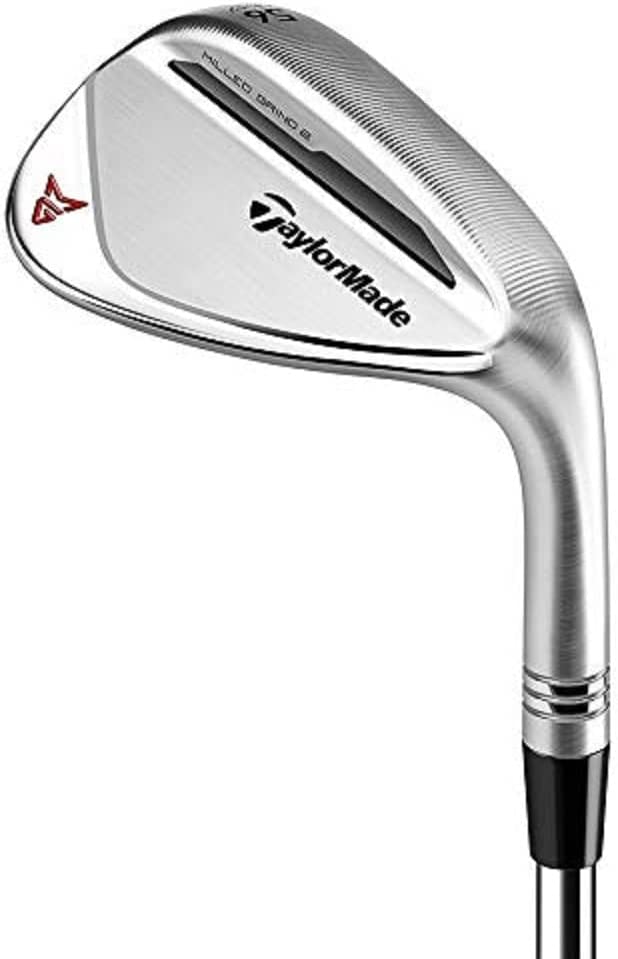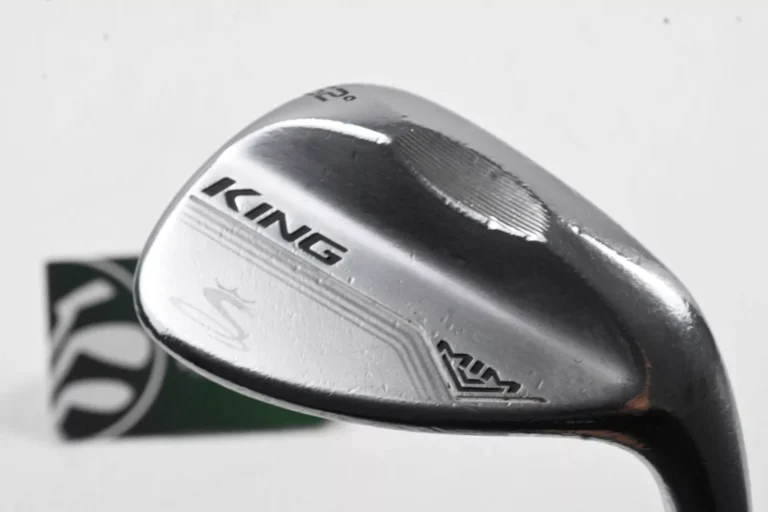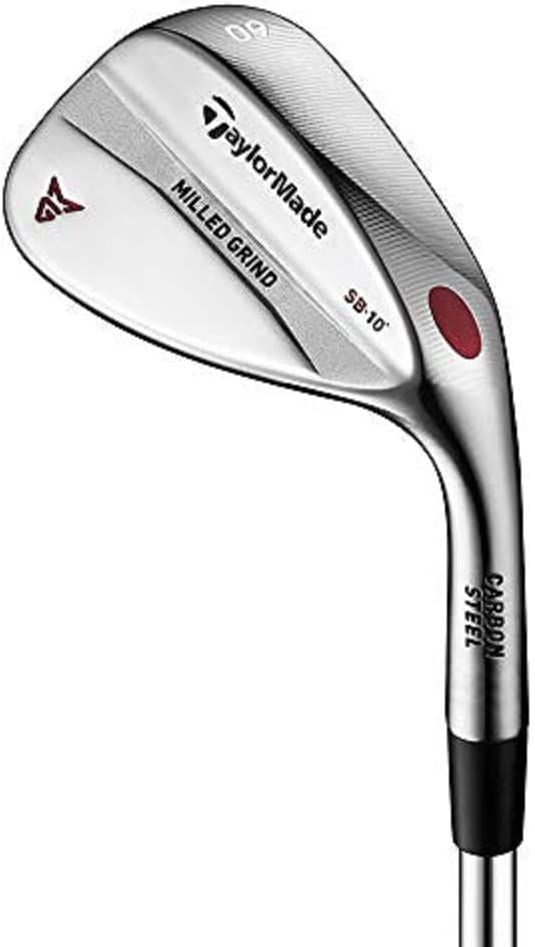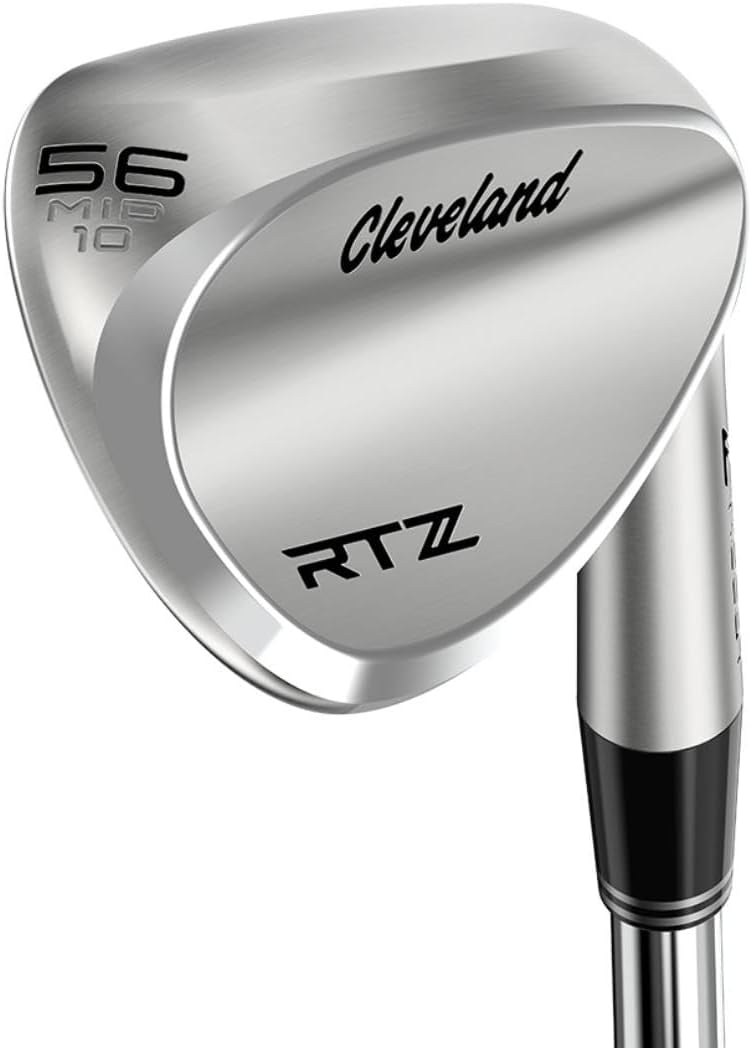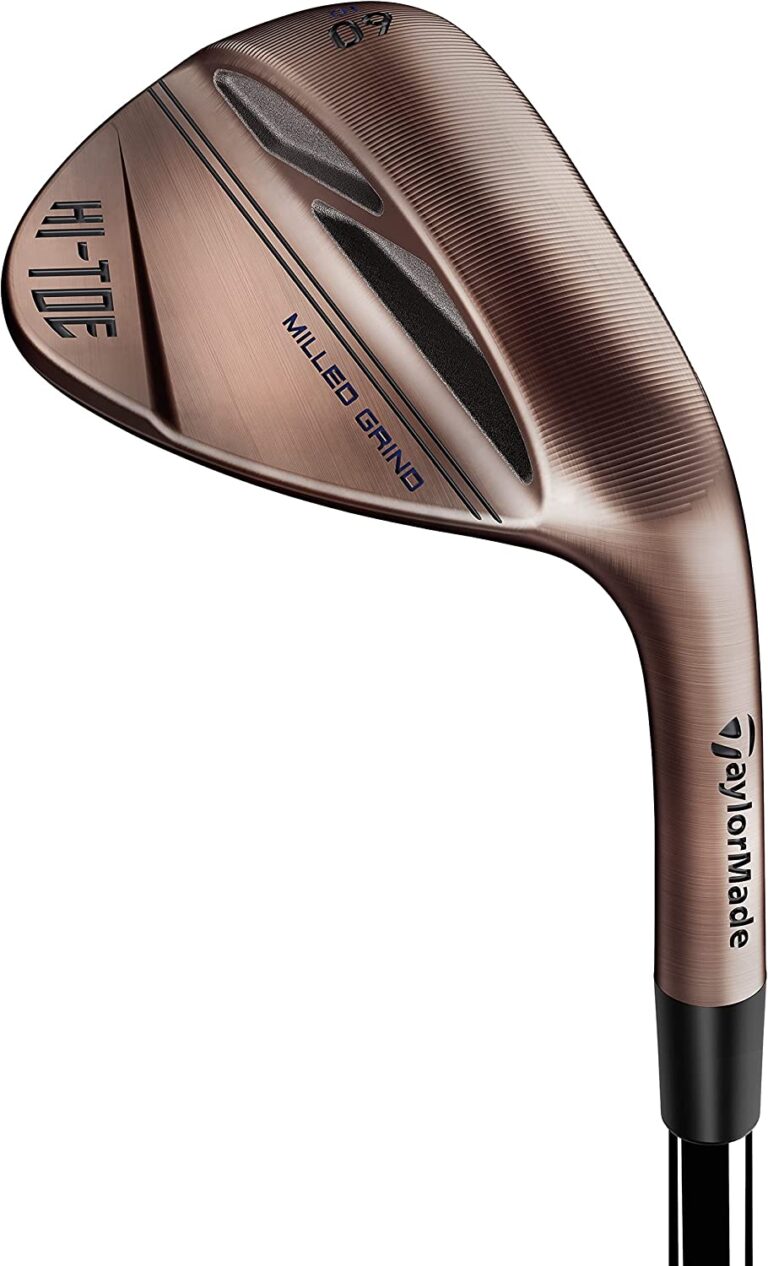The 54 degree wedge
Hello, folks! Today, we’re about to embark on an exciting journey to unravel one of golf’s little-known secrets: the 54 degree wedge. From its distinct characteristics to its multipurpose use, we’re going to cover it all.
So, buckle up, grab a cup of joe, and let’s swing into the world of golf’s most versatile tool: the 54-degree wedge.
54 Degree Wedge: An Unsung Hero
The Basics
The 54 degree wedge, often overshadowed by its popular siblings – the 56 and 60 degree wedges, is a bit of an unsung hero in the golf world. It’s an all-rounder, a jack of all trades, that can make a significant difference to your game if utilized correctly. The 54 degree wedge strikes a perfect balance between loft and distance, making it an indispensable tool in your golf arsenal.
Versatility on the Green
What sets the 54 degree wedge apart is its versatility. It’s not just about the loft, it’s also about the maneuverability it offers. Whether you’re in a bunker, short of the green, or navigating a tricky lie in the rough, this wedge can be your trusty sidekick. It’s like a Swiss Army knife in your golf bag.
What is a 54 Degree Wedge?
A 54 degree wedge is a type of golf club used mainly for short-distance shots, where precision and control are paramount. Named for its loft angle of 54 degrees, this wedge fills the gap between a pitching wedge (which typically has a loft of 46-50 degrees) and a sand wedge (usually around 56 degrees).
Characteristics of a 54 Degree Wedge.
The 54 degree wedge offers a perfect blend of loft and distance, making it a versatile choice for a range of scenarios on the golf course. Here’s a look at some of its main features:
- Loft: The defining characteristic of the 54 degree wedge is its loft. The 54 degrees of loft allow the golfer to launch the ball high into the air and land it softly on the green, making it ideal for shots that require precision and finesse.
- Bounce: Bounce refers to the angle created between the leading edge and the lowest point of the clubhead. This feature helps the club “bounce” off the ground or sand, reducing the chance of digging. The bounce of a 54 degree wedge can vary, depending on the design and manufacturer.
- Versatility: Thanks to its balanced loft, a 54 degree wedge is versatile. It can handle a variety of shots, including full shots from the fairway, chip shots near the green, bunker shots, and even pitch shots over obstacles.
- Control: With its moderate loft and bounce, the 54 degree wedge provides excellent control. It allows golfers to manipulate the ball’s trajectory and spin, making it a useful tool in the golfer’s arsenal.
In short, a 54 degree wedge is a versatile, user-friendly club that can help golfers navigate a variety of challenging situations on the golf course. Whether you’re a novice golfer or a seasoned pro, having a 54 degree wedge in your bag can give you an edge in your game.
Why Choose a 54 Degree Wedge?

Striking the Perfect Balance.
The most compelling reason to choose a 54 degree wedge is the perfect equilibrium it strikes between loft and distance. It slots in neatly between the high loft of a 56 or 60 degree wedge and the lower loft of a 50 or 52 degree gap wedge.
This balance allows it to handle a variety of shots that other wedges might struggle with. Whether you’re aiming for a long chip shot or trying to clear a pesky bunker, the 54 degree wedge has got your back.
Versatility is Key.
One of the biggest draws of the 54 degree wedge is its versatility. This club is not a one-trick pony. It’s a jack-of-all-trades that can handle full shots, chips, pitches, and bunker shots with equal aplomb. It’s like having a Swiss Army knife in your golf bag, ready to take on whatever the course throws at you.
Spin Control.
When it comes to controlling the spin of the ball, the 54 degree wedge is a real game-changer. Its unique loft allows you to put just the right amount of backspin on the ball, giving you greater control over where it lands and how it rolls.
Whether you’re trying to stick the ball close to the pin or halt it on a downhill slope, the 54 degree wedge gives you the liberty and power to do so.
Ease of Use.
Let’s face it, golf can be a tough game, and every little bit of help counts. The 54 degree wedge is known for its ease of use. It’s a forgiving club that can help mitigate the effects of a less-than-perfect swing.
So, whether you’re a novice golfer still getting the hang of things or a seasoned pro looking for a reliable club, the 54 degree wedge is a solid choice.
A Great Addition to Your Golf Bag.
Ultimately, choosing a 54 degree wedge is about expanding your options on the golf course. It’s about having the right tool for the job, no matter what situation you find yourself in.
By adding a 54 degree wedge to your golf bag, you’re equipping yourself with a versatile and reliable club that can help improve your game. So why not give it a shot? You might just find it’s the club you’ve been missing all along.
Choosing the Right 54 Degree Wedge for Your Game.
Selecting the perfect 54 degree wedge is a bit like choosing a dance partner. You need a club that matches your rhythm, compliments your style, and can keep up with you no matter what moves you throw.
So, let’s waltz through the factors you need to consider when picking your perfect 54 degree wedge.
Understanding Your Style of Play.
Your playing style, personal preferences, and course conditions significantly influence the choice of your wedge.
Do you typically take big divots? If so, you might need a wedge with more bounce. Do you play on courses with firm conditions? Then a wedge with less bounce and a narrower sole might be a better fit.
Wedge Grinds.
Wedge grind refers to the manipulation or removal of material from the sole of the club, changing its width and bounce. Grinds can affect the club’s turf interaction, allowing for more versatility in shot-making.
Various manufacturers offer different grind options, such as Full, M (Mid), S (Standard), L (Low), and High Bounce grinds. Your swing type and course conditions should guide your choice of grind.
Bounce Angle.
Bounce is the angle between the leading edge and the lowest point of the clubhead. It can significantly impact how the club interacts with the turf at impact. A higher bounce angle is suitable for conditions with softer turf or sand, while a lower bounce angle works best on firmer ground.
Shaft Length and Flex.
While standard wedge shafts work well for most golfers, consider the length and flex that best fit your swing speed and comfort. Taller golfers might prefer longer shafts, while shorter players might benefit from shorter shafts.
Similarly, players with faster swing speeds might prefer stiffer shafts for better control.
Grip Size and Material.
Lastly, the grip can significantly influence your comfort and control over the wedge. Make sure to choose a grip size that matches your hand size and material that feels comfortable and provides good traction in your typical playing conditions.
Remember, choosing the right 54 degree wedge is a personal decision. Try out different options, seek professional advice if possible, and ultimately, trust your instincts. After all, you’re the one who’s going to be swinging the club!
How to Hit with a 54 Degree Wedge.
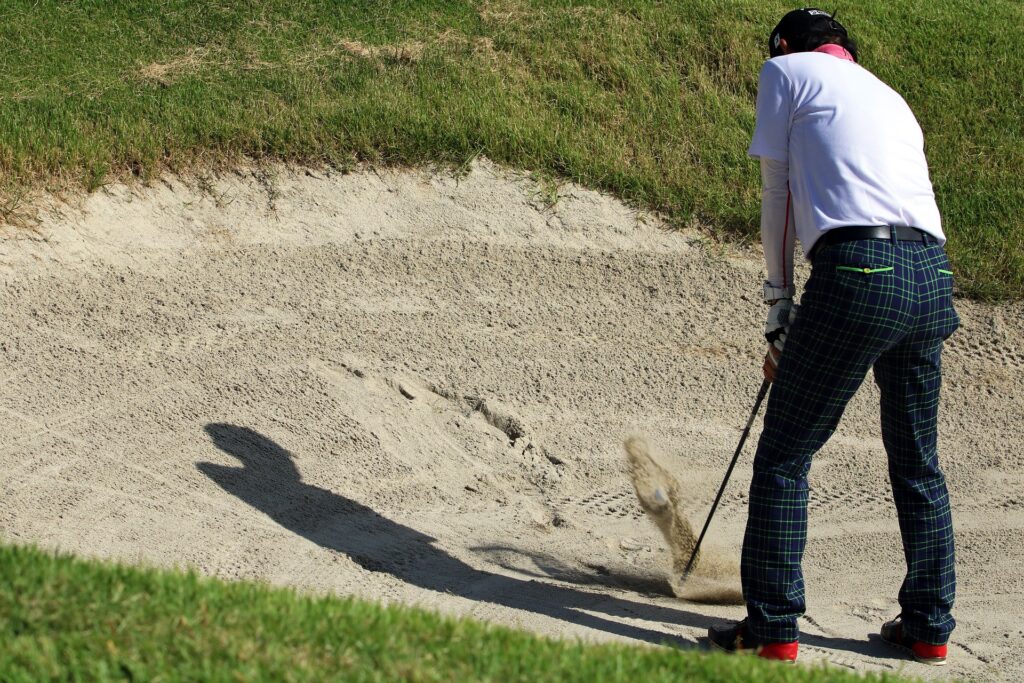
Hitting with a 54 degree wedge can be a game-changer in your golf repertoire. With the right approach, this club can help you master the middle ground between short chips and full wedge shots. So, let’s break down how to make the most out of your 54 degree wedge.
Full Shots.
When hitting full shots with your 54 degree wedge, proper setup is crucial. Position the ball centrally in your stance, and keep your hands slightly ahead of the ball at address.
This setup promotes a downward strike, crucial for creating spin and control. Maintain a smooth and controlled swing speed. Remember, it’s not about power, but precision and timing.
Chip Shots.
For chip shots, the 54 degree wedge is ideal for those moments when you need to get the ball up quickly over an obstacle but still want it to roll out towards the hole. Position the ball back in your stance, lean the shaft towards the target, and make a simple back-and-through swing. The idea is to pop the ball up with enough loft to clear the obstacle but allow it to roll out like a putt once it lands.
Bunker Shots.
The 54 degree wedge can be a savior in bunker situations. Open your stance and clubface, then aim to strike the sand about 2 inches behind the ball.
The loft and bounce of the 54 degree wedge will help the club glide through the sand, popping the ball out with ease. Remember to follow through and maintain a smooth tempo.
Pitch Shots.
For those pesky pitch shots, the 54 degree wedge can be your go-to club. Play the ball in the middle of your stance, and make a more substantial swing than a chip shot, but not a full swing.
The aim is to lift the ball higher and stop it quicker than a chip shot. It’s about finding the sweet spot between a chip and a full shot.
Hitting with a 54 degree wedge is as much about feel as it is about technique. Practice different shots to understand how the club behaves and how it feels in your hands.
Over time, you’ll develop a sense of touch and control that will make your 54 degree wedge a trusted companion on the golf course.
54 Degree Wedge in Bunker Play.
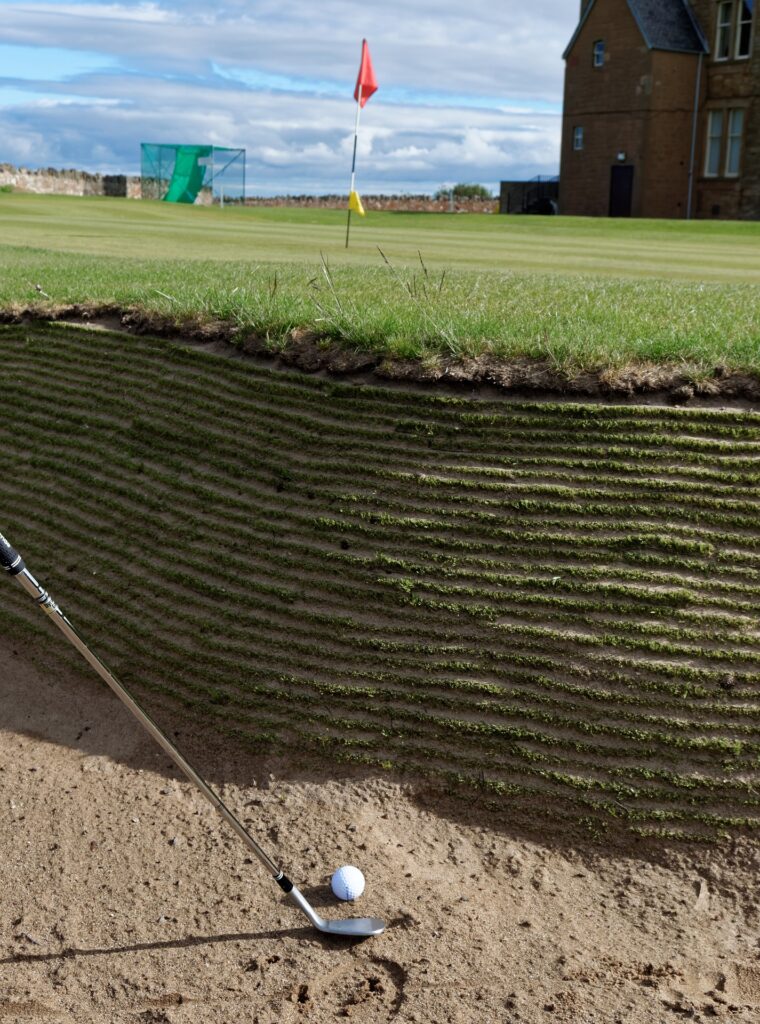
Getting stuck in a bunker can be a real sand trap for your score. However, with a 54 degree wedge and the right technique, you can sail smoothly out of the bunker and back onto the green. Let’s explore how to effectively use a 54 degree wedge in bunker play.
Green-Side Bunkers.
In green-side bunkers, the goal is to get the ball out of the sand and as close to the pin as possible. Your 54 degree wedge can be an invaluable tool in this situation. Here’s how to do it:
- Open your stance and clubface. This helps increase the loft and allows the club’s bounce to work effectively, preventing it from digging too deeply into the sand.
- Aim to strike the sand about 2 inches behind the ball. This allows the sand to cushion the ball and lift it out of the bunker.
- Swing along the line of your feet, not the target line. This helps promote an outside-in swing path, ideal for bunker shots.
- Ensure a full follow-through. This helps generate the necessary clubhead speed to propel the ball out of the sand and towards the target.
Fairway Bunkers.
Fairway bunkers require a slightly different approach. You still want to get the ball out cleanly, but you also want to maximize distance. The 54 degree wedge can help you achieve this:
- Position the ball slightly further back in your stance than usual. This helps ensure a clean strike.
- Aim to strike the ball first, not the sand. Unlike green-side bunkers, in fairway bunkers, you want to minimize the amount of sand you hit.
- Make a shallower swing. This helps to avoid hitting too much sand and promotes a clean contact with the ball.
- Maintain a steady base. Fairway bunker shots can be tricky, so try to keep your lower body quiet and focus on a smooth, rhythmic swing.
Mastering bunker play with a 54 degree wedge requires practice. Spend some time in the practice bunker to get a feel for how the club behaves in the sand.
Over time, you’ll find that your 54 degree wedge can be a reliable ally in navigating your way out of sandy situations.
54 Degree Wedge in Short Game.
When you’re close to the green, precision, and control become paramount. This is where the short game comes into play, and a 54-degree wedge can be a real game-changer. Let’s explore how this versatile club can help elevate your short game.
Chipping with a 54 Degree Wedge.
Chipping involves making a short, lifting shot that spends more time on the ground than in the air. A 54-degree wedge is ideal for these situations, especially when you have a little more green to work with or need to get over a small obstacle:
- Play the ball back in your stance and lean the shaft slightly toward the target.
- Make a simple back-and-through swing, focusing on clean contact with the ball.
- Allow the loft of the 54-degree wedge to pop the ball up over the obstacle, while the roll-out gets it close to the hole.
Pitching with a 54 Degree Wedge.
Pitching involves a longer, higher shot than chipping and is typically used when you need to clear a hazard or stop the ball quickly. The 54 degree wedge is perfect for these shots:
- Play the ball in the middle of your stance, and make a more substantial swing than a chip shot.
- Allow the club to slide under the ball, using the loft to lift the ball high and land it softly.
- Practice different swing lengths to control the distance of your pitch shots.
Flop Shots with a 54-Degree Wedge.
Flop shots are high, soft shots used when you need to get the ball up quickly and stop it with minimal roll.
While typically played with a higher lofted wedge, a 54-degree wedge can still perform admirably in these situations:
- Open your stance and the clubface to increase loft.
- Make a full, aggressive swing, allowing the club to slide under the ball and launch it high into the air.
- Practice this shot as it requires a good feel and touch, but once mastered, it can be a valuable weapon in your short game arsenal.
Remember, the key to a strong short game is practice, feel, and versatility. By mastering different shots with your 54-degree wedge, you can arm yourself with a range of options for any situation, giving you the edge in your short game.
FAQs about the 54 Degree Wedge
Is a 54 degree wedge good for beginners?
Absolutely! A 54 degree wedge is a great tool for beginners due to its versatility. It’s easy to hit and can be used in various situations, making it a perfect club to learn different shots.
How far should I hit with a 54 degree wedge?
The distance varies based on your skill level. On average, a golfer can hit between 80-110 yards with a full swing using a 54 degree wedge.
Is a 54 degree wedge good for sand bunkers?
Yes, the 54-degree wedge can be effective in sand bunkers, especially those with a bit more distance to the green. Its loft and bounce characteristics help lift the ball smoothly out of the sand.
What’s the difference between a 54 and 56 degree wedge?
The primary difference lies in the loft. A 56 degree wedge has a higher loft, which means the ball will fly higher but cover less distance. A 54 degree wedge, on the other hand, strikes a balance between loft and distance.
Can I use a 54 degree wedge for chipping?
Yes, a 54 degree wedge is a good option for chipping. It provides a moderate loft, which is perfect for getting the ball airborne and controlling the roll on the green.
How do I choose the right 54 degree wedge?
Choosing the right 54 degree wedge depends on your style of play and course conditions. Factors like grind and bounce play a crucial role. It’s always recommended to try out different wedges to see what suits you best.
Conclusion
The 54 degree wedge is a hidden gem in the golf world. Its perfect blend of loft and distance, combined with its versatility, makes it a must-have club in your golf bag. Whether you’re a beginner, intermediate, or a seasoned golfer, this wedge can elevate your game to new heights. So, don’t overlook this unsung hero. Give it a shot, and you might just find your new secret weapon for the greens!
Remember, golf isn’t just a sport, it’s an art form. And like any art, it requires the right tools. The 54 degree wedge is one such tool, waiting to be wielded by the discerning golfer. It’s not about having the most clubs, but the right ones. And a 54 degree wedge might just be the right one for you.
54 Degree Wedge: The Takeaway
So there you have it, folks! We’ve dived into the world of the 54 degree wedge, explored its many facets, and hopefully, unraveled some of its mysteries. We’ve discovered how this often overlooked club can be a game-changer, lending versatility and precision to your game.
So the next time you find yourself in a tricky spot on the course, don’t fret. Just reach for your trusty 54 degree wedge, take a deep breath, and swing away. After all, golf is a game of inches, and every shot counts. Here’s to lower scores and more fun on the course!
Ready to Tee Off?
And with that, we wrap up our detailed guide to the 54 degree wedge. We hope you’ve found this information useful and that it helps you up your game. Remember, the right club can make all the difference. So why not give the 54 degree wedge a shot? You might just find it’s the club you never knew you needed. Happy golfing!

